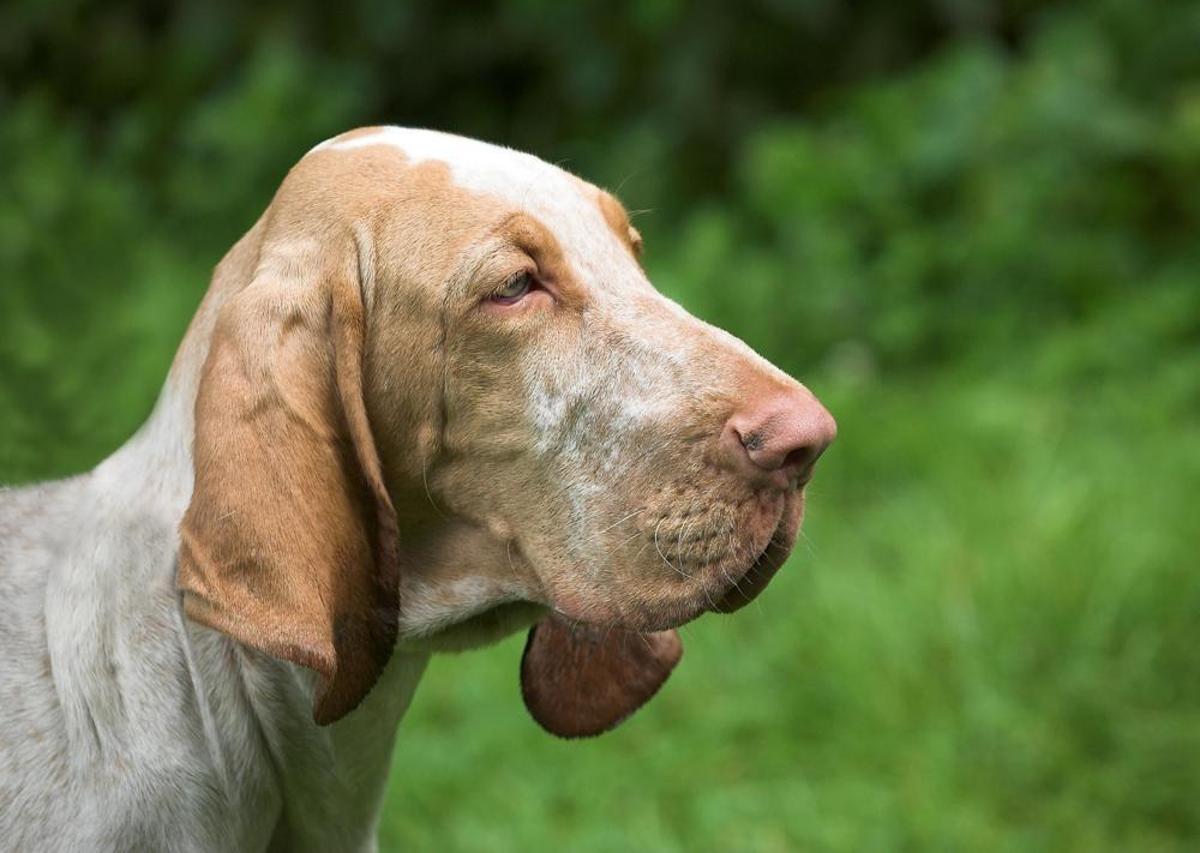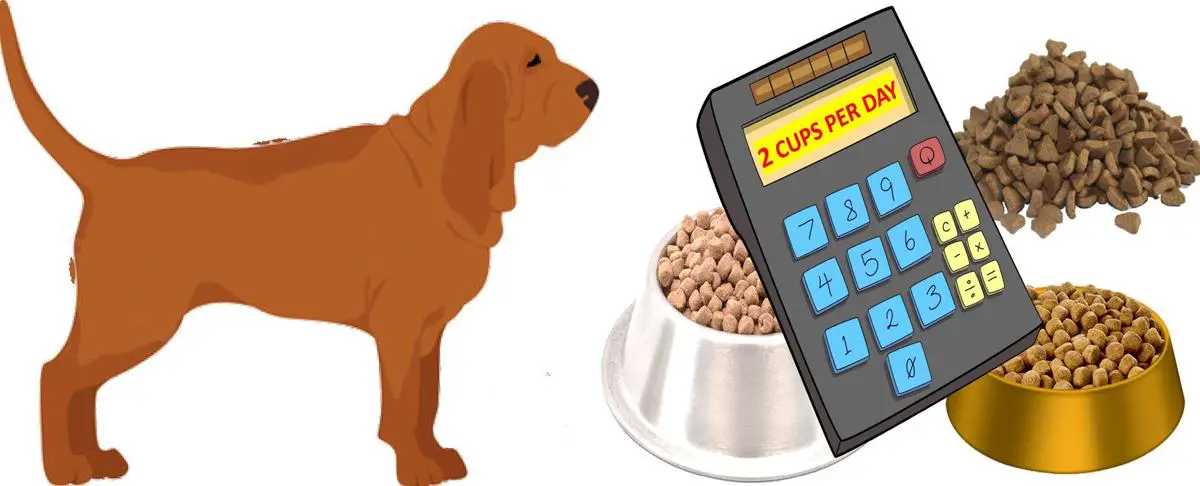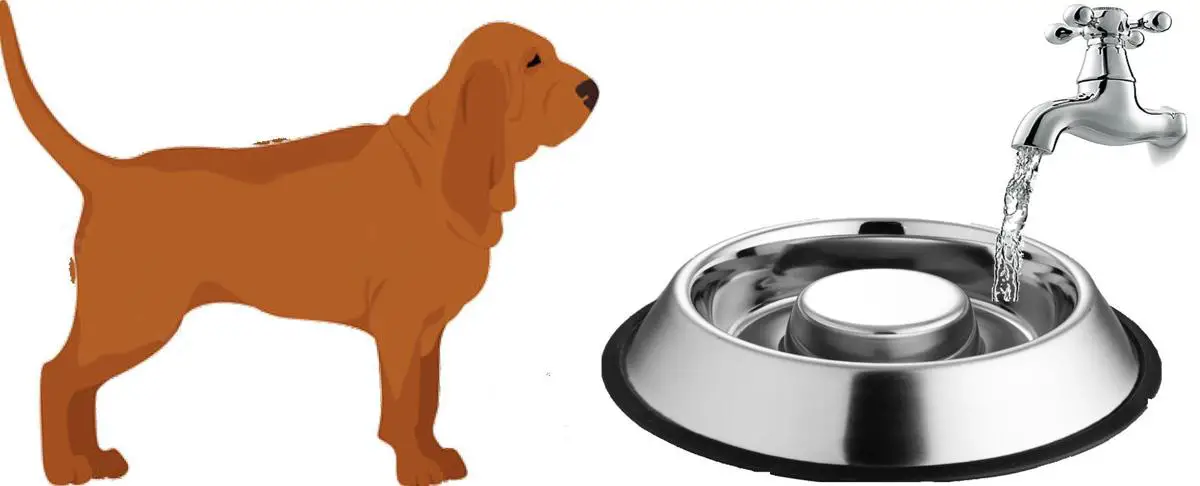Quick Links: Table of Contents
- Bloodhound Breed Overview
- History of the Bloodhound Breed. Where Bloodhounds came from
- What the Bloodhound Looks Like
- How Much is the Bloodhound Puppy?
- Best Bloodhound Breeders
- Adopting or Rescuing the Bloodhound
- Bloodhound Growth
- What Colors do Bloodhounds Have?
- Bloodhound Litter Size
- How Fast Bloodhounds Can Run
- Good Names for Bloodhounds
- How Intelligent are Bloodhounds?
- How Popular are Bloodhounds with New Dog Owners?
- Health Problems in Bloodhounds and How to Prevent Them
- How to Take Care of Bloodhound
- Dog Breeds That Are Similar to Bloodhounds
- Other Things to Know About Bloodhounds
Bloodhound Breed Overview
The Bloodhound is a large-sized dog.
The adult Bloodhound stands 23 to 27 inches ttall at the shoulder.
The Bloodhound belongs to the Hound Dogs group.
Dogs in the Hound Dogs group, like the Bloodhound, were bred to pursue and hunt warm-blooded animals. Hounds hunt by using their good sight or their good sense of smell. Dogs that belong to the Hound Group have strong prey drives and often will stop at nothing to catch what they are pursuing.
The fact that Bloodhounds belong to the Hound Dogs group is one of the reasons why Bloodhounds have the personality and temperament that they have.
The temperament of the Bloodhound is generally described as:
- Affectionate
- Even-Tempered
- Gentle
- Steadfast
- Stubborn
History of the Bloodhound Breed. Where Bloodhounds came from
Although there are records of canines finding and following other animals as far back as the first century AD, the Bloodhound appeared to have its beginnings in medieval Europe.
It is said that when William the Conqueror conquered England in 1066, he took hounds known as the St.
Hubert Hounds with him.
The hound developed into the Bloodhound, and it is believed that Queen Victoria, a dog lover who was interested in this remarkable tracker and entered one of her dogs in a dog show in 1869, had a significant role in preventing the breed`s extinction.
In Scotland, this breed was known as the sleuth hound and employed to catch burglars and thieves, according to notes on the Bloodhound.
.
What the Bloodhound Looks Like
The Bloodhound is a sturdy, robust dog with a sturdy back considering its height.
It has a remarkably sensitive black nose and a head that is long and narrow in comparison to its height and length.
The breed appears rather melancholy because of its deeply sunken golden or hazel eyes.
This depressing appearance is caused by the upper eyelids` weight pulling down the lower ones.
Children enjoy playing with their long, drooping ears, as well as the skin that is severely wrinkled or has folds around the head and neck.
To hold the scent particles while tracking, these folds have a role.
The Bloodhound has a striking appearance, with a tail carried high, robust, muscular legs, and a noticeable dewlap.
.
How Much is the Bloodhound Puppy?
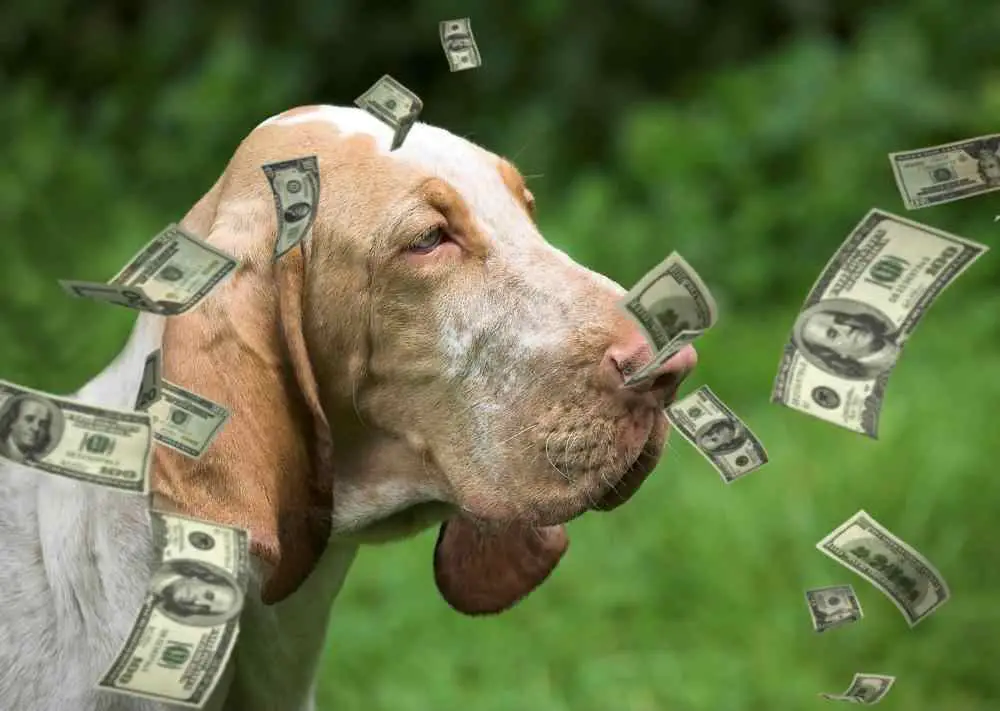
The average price of a Bloodhound puppy is $920. The price of a Bloodhound puppy ranges from $700 to $1000.
A lot of factors determine the price of the Bloodhound. These factors include what health records the Bloodhound puppy has, the lineage of the Bloodhound puppy, the US state the breeder is located in, etc.
To estimate how much you can expect to pay for a puppy Bloodhound based on the many factors that determine the price of the Bloodhound puppy, check out our calculator that lets you estimate how much you should expect to pay for the Bloodhound puppy based on what you want in the puppy.
When looking to buy a puppy, look at buying a puppy only from well-established breeders that breed puppies primarily for the love of the Bloodhound breed, and secondarily for profit. Do not buy a puppy from a puppy mill. Puppy mills mass-produce puppies in bad living conditions for maximum profit.
You may also consider adopting instead of buying a puppy. Adoption costs are very low compared to the price of a puppy.
Best Bloodhound Breeders
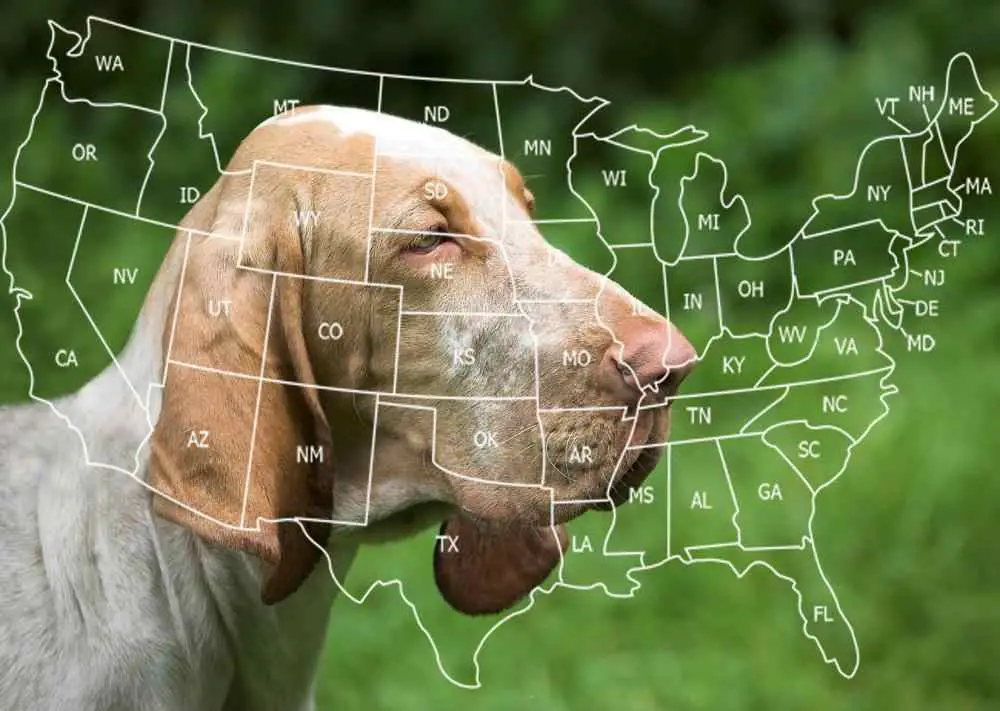
We have researched reputable Bloodhound breeders that you can buy a puppy.
Go to this page for our complete list of reputable Bloodhound breeders in various states in the United States.
On this page, you will see how much these breeders sell their puppies for, and how many puppies they have available.
A few of these breeders are listed below.
Rhonda Burns
Puppy Price: $1250.00
Bloodhounds812
Puppy Price: $1000-$1400
Big Boy Bloodhounds
Puppy Price: $1000
Craig`s Hickory Hills Bloodhounds
Puppy Price: $1000
Randall and Alisha Stubblefield
Puppy Price: $900. Pet registration
Adopting or Rescuing the Bloodhound
You may consider adopting a dog instead of buying a puppy. Many dogs, Bloodhounds included, are currently available for adoption in your local dog shelters.
These helpless but adorable dogs are waiting in dog shelters hoping that someday someone will rescue them. Dog adoption costs are lesser than the cost of a new puppy. Dog adoption costs are usually around $300 or even less.
In addition to your local dog shelter, another good place to find dogs that are available for adoption is petfinder.com.
Below is an adorable Male Bloodhound named Charlie that is currently available for adoption on Petfinder.com. You can find other lovely Bloodhounds like Charlie on pefinder.com.
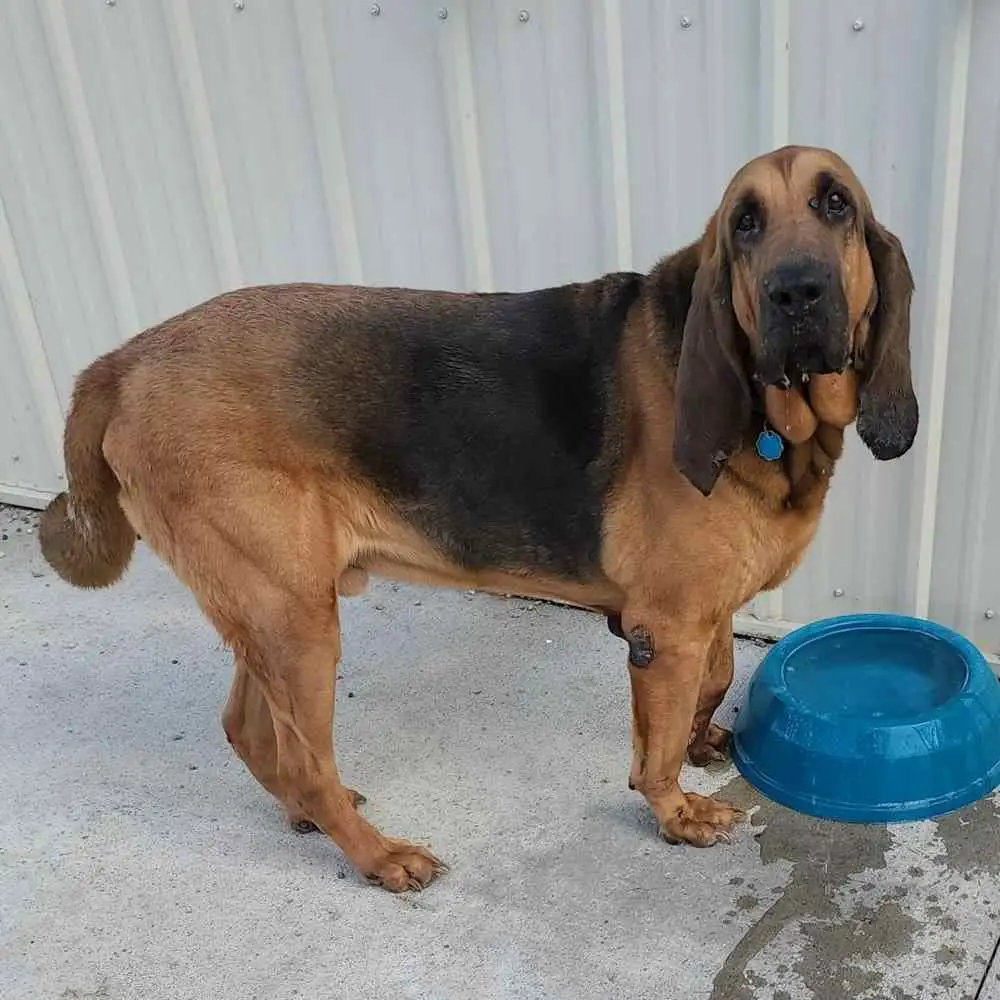
Ol' Red is the name of another Bloodhound (Male) on petfinder.com that is looking for a new forever home.
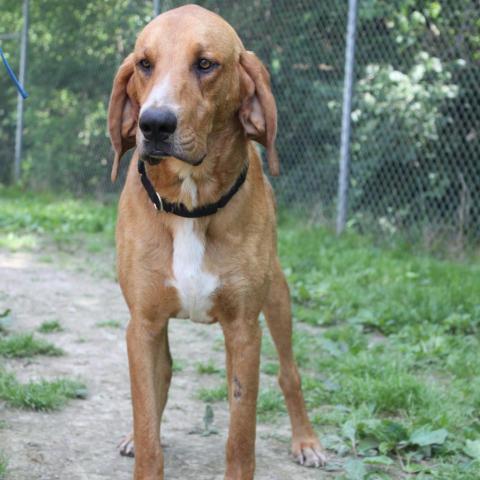
You can find more Bloodhounds that are available for adoption on petfinder.
Bloodhound Growth
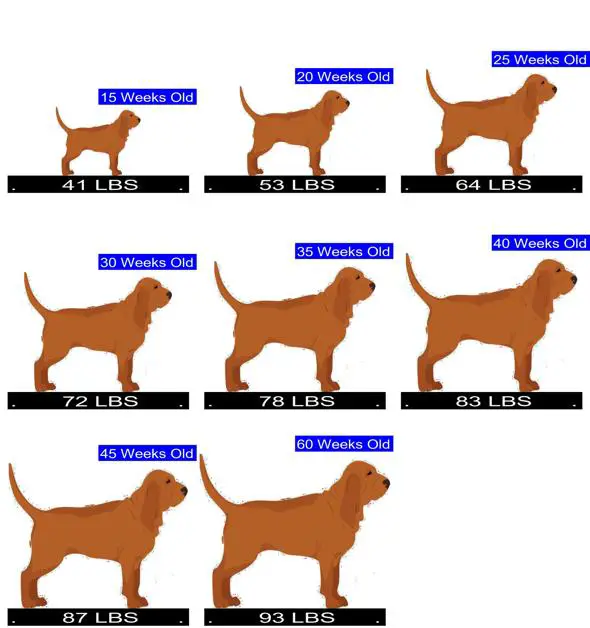
New Bloodhound owners need to know about the growth of their Bloodhounds. This will help them plan their living spaces accordingly.
Also, knowing the typical growth pattern of the Bloodhound will help new owners catch the abnormal growth of their Bloodhound early.
See our calculator for predicting how big your Bloodhound puppy will get. You will also learn about the typical weight of the Bloodhound at different ages and how to catch abnormal growth in your Bloodhound
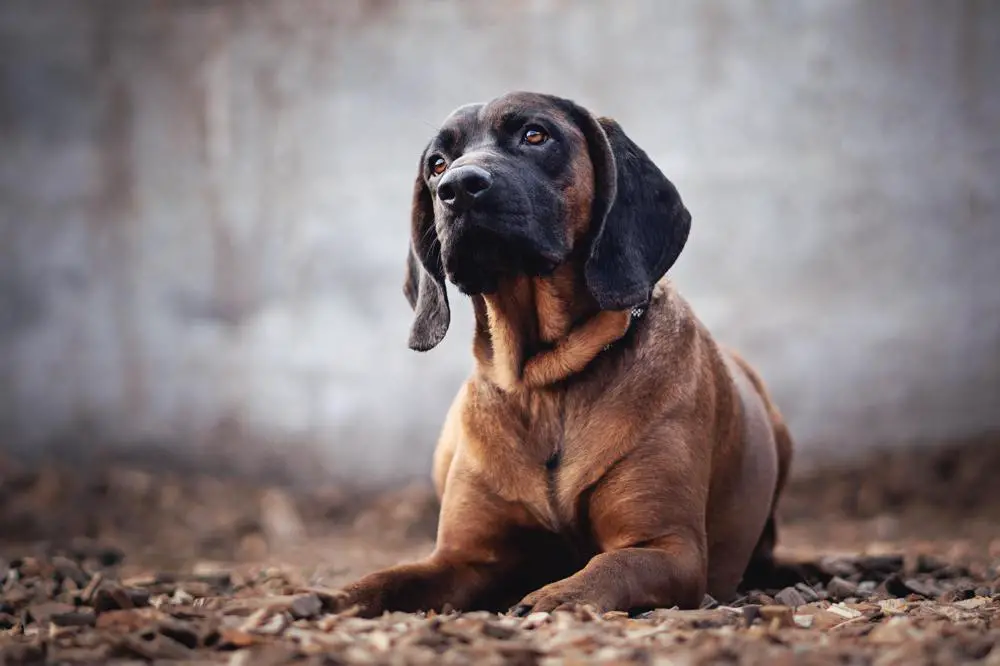
What Colors do Bloodhounds Have?
Bloodhounds come in the following beautiful primary colors:
- Brown / Chocolate
- Yellow / Tan / Blond / Fawn
- Red / Chestnut / Orange
- Bicolor
- Black
- Apricot / Beige
- Brindle
- White / Cream
- Tricolor (Brown, Black, & White)
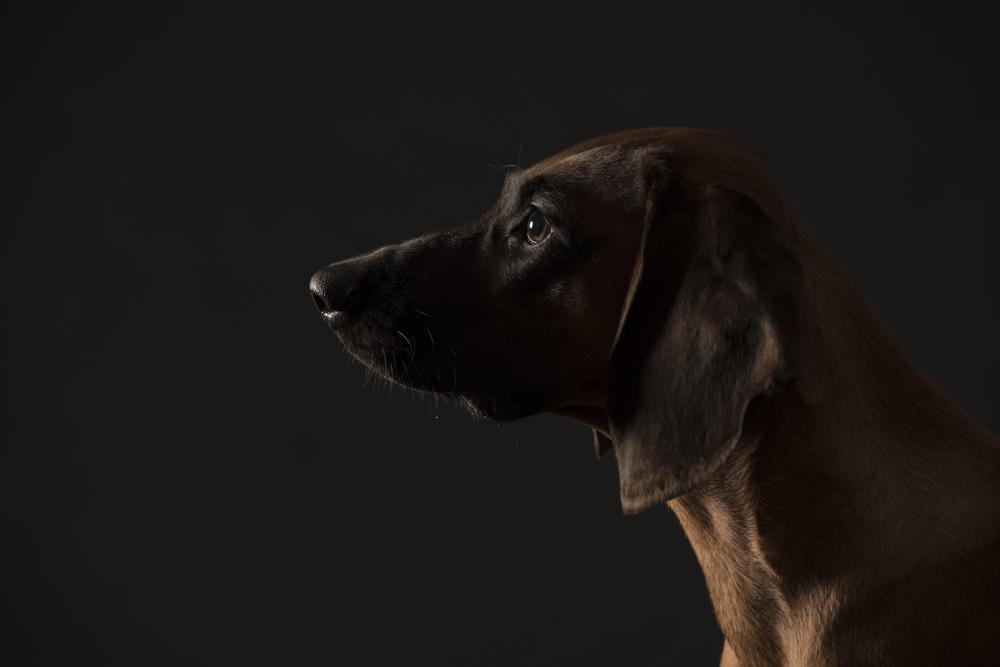
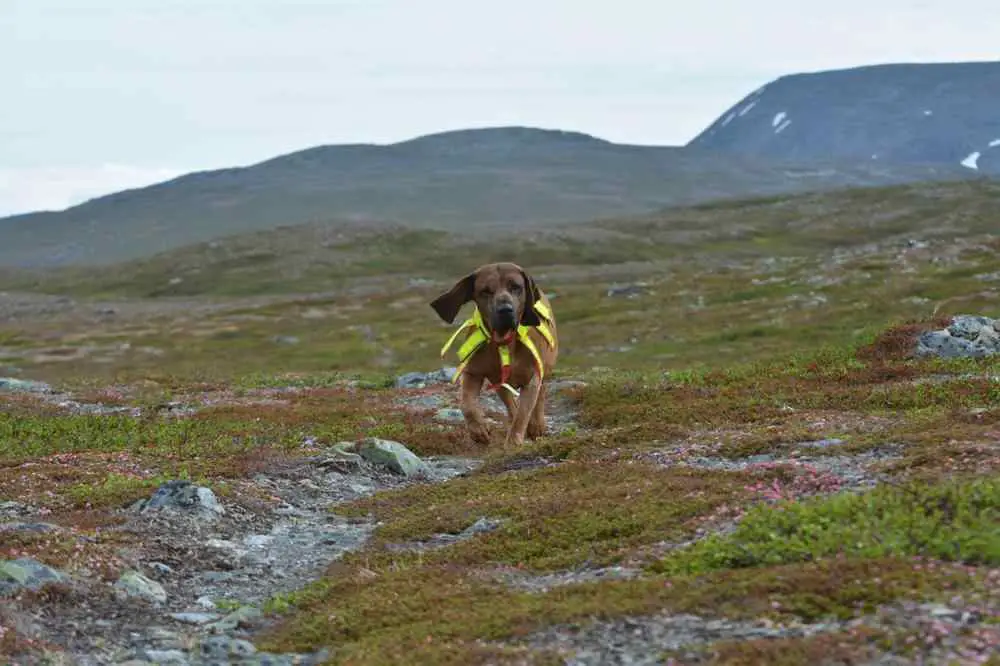
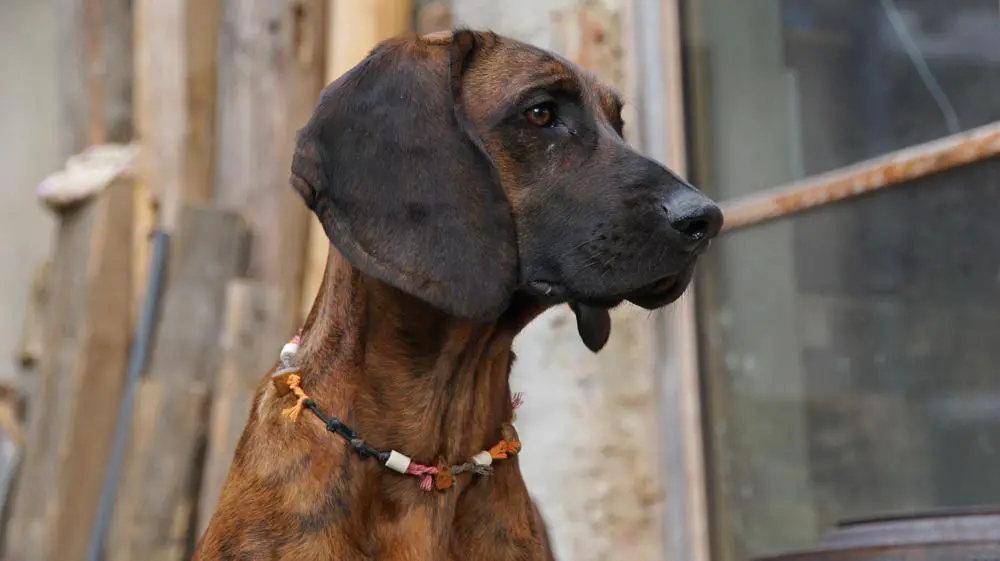
Bloodhound Litter Size
Researchers from the Norwegian School of Veterinary Science did a study where they counted the numbers of puppies in 1 different Bloodhound birth litters.
From this study, the researchers found that the average number of puppies that Bloodhounds can have is 7 puppies. Also, the Bloodhound can have as few as 7 puppies per litter and as many as 7 puppies per litter.
The number of puppies that the Bloodhound will have depends on factors such as the age of the Bloodhound, the method of pregnancy, etc.
Click here to see our calculator for predicting how many puppies your Bloodhound will have and how the litter size of the Bloodhound compares to the litter size of other dog breeds.
How Fast Bloodhounds Can Run
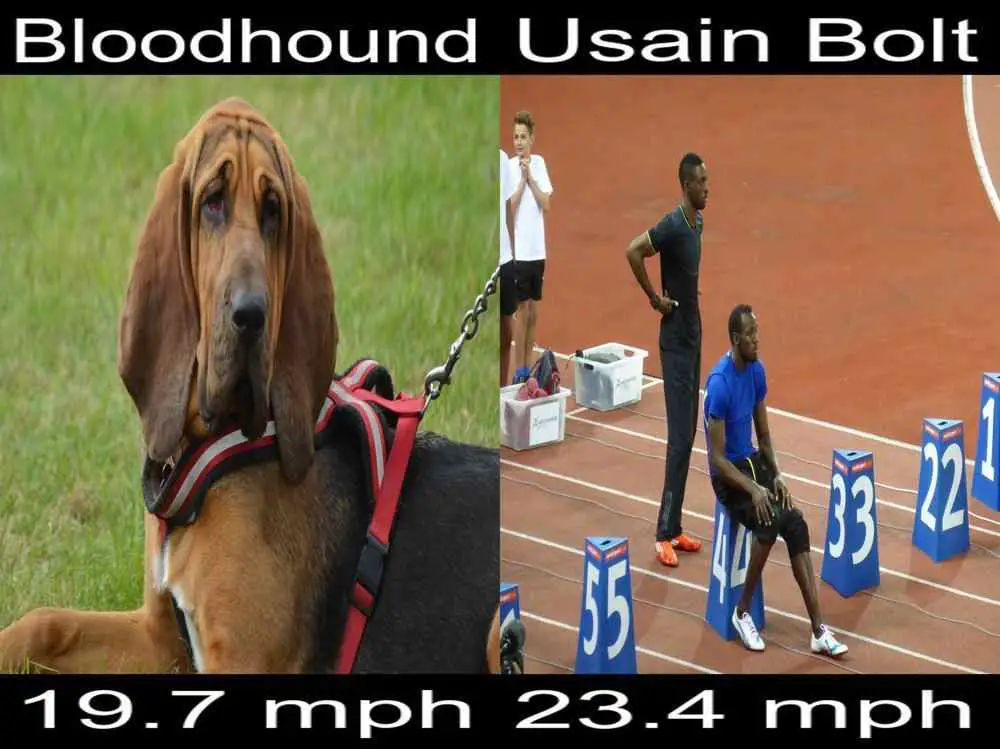
How fast a dog breed can run is a good measure of how athletic the dog breed is.
The American Kennel Club (AKC) regularly conducts dog running competitions. The AKC records the running speed of competing dogs in these competitions. These competitions are open to all dog breeds.
Based on our analysis of the speeds of 10 different Bloodhounds, the average speed of the Bloodhound is 19.7 mph (31.7 kmph).
The fastest speed on AKC record that the Bloodhound ran in a race is 22.08 mph (35.5 kmph) and the minimum speed on record in a race for a Bloodhound is 16.24 mph (26.1 kmph).
Click here to see how the speed of the Bloodhound compares to the speed of other dogs and other mammals such as cats, horses, humans, etc.
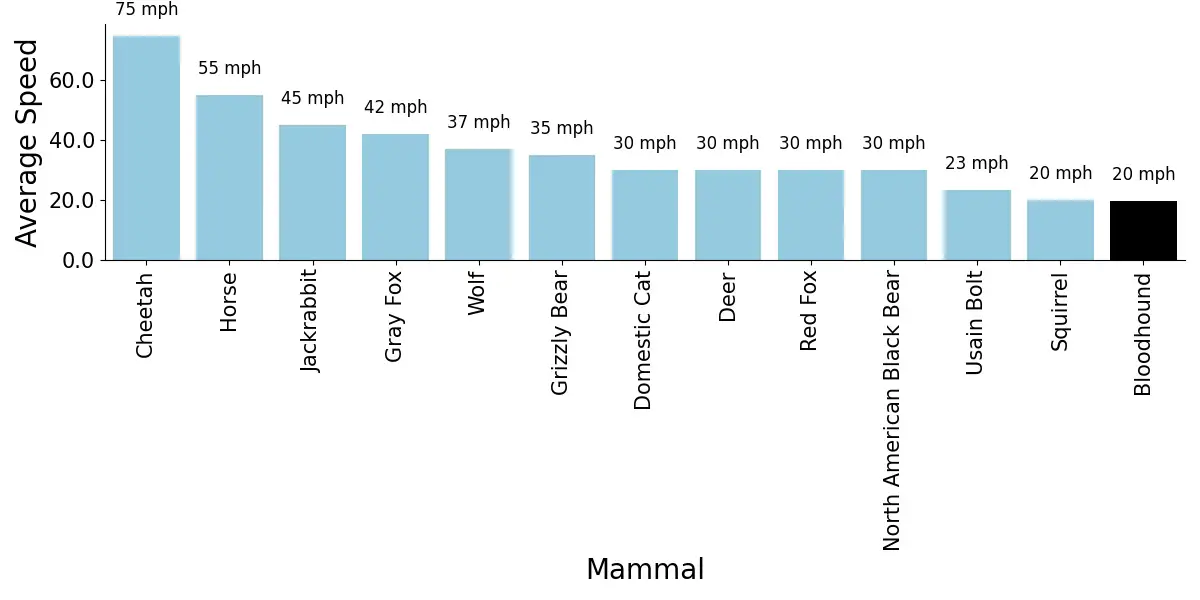
Good Names for Bloodhounds
Here are some really good names that are typical for the Bloodhound ranked by popularity:
- Duke
- Beau
- Hank
- Poncho
- Red
- Waylon
- Roscoe
- Goliath
- Copper
- Bowie
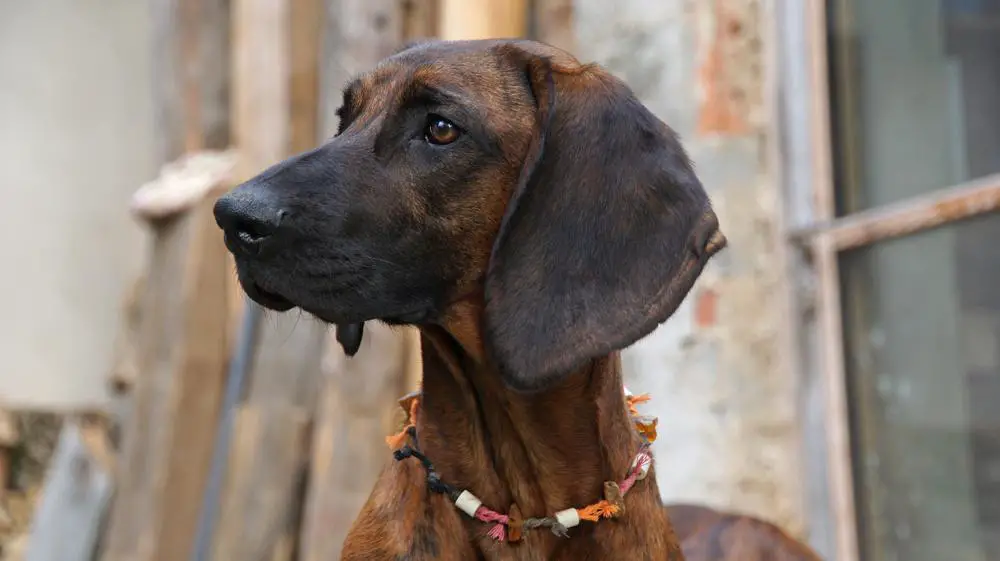
How Intelligent are Bloodhounds?
| Bloodhound | |
|---|---|
| Intelligence Rank | 74 out of 130 dog breeds |
| Trainability | Tend To Learn New Commands After 80 To 100 Repetitions Or More! |
According to Prof. Stanley Coren, a Canadian psychology professor/dog trainer, the total intelligence that a dog demonstrates is the addition of three types of intelligence. These intelligence types are:
- Instinctive Intelligence: This is the natural intelligence that comes from instinct. For example, dog breeds that have been historically bred to be guard dogs will have a high `guarding` intelligence compared to dogs that were not bred for guarding.
- Adaptive Intelligence (learning and problem-solving ability): This indicates what a dog can learn to do for himself or herself. Adaptive intelligence is specific to each dog, and not breed specific. You can improve your dog`s adaptive intelligence by investing time to train your dog.
- Working/Obedience Intelligence: This type of intelligence is breed-specific. Certain dog breeds tend to have higher working/obedience intelligence than some other breeds. This intelligence is the closest to what we might call school-learning ability and it is based upon what the dog can learn to do when instructed by humans. This type of intelligence can be measured for each dog breed and compared to that of other dog breeds.
Professor Stanley Coren measured and ranked the working intelligence of about 130 different dog breeds.
Prof. Coren found that the Bloodhound has an obedience intelligence rank of 74 out of 130 dog breeds. Thus, Prof. Coren put Bloodhounds in the `Lowest Degree of Working/Obedience Intelligence Dogs` category.
This means that Bloodhounds tend to learn new commands after 80 to 100 repetitions or more!.
However, we should mention that a dog should not be judged based on its intelligence alone. There are other important factors you need to consider when deciding on which dog breed to get. These other factors include sociability, adorability, and compatibility of the dog breed with your lifestyle.
See the intelligence ranking of some other dog breeds below:
| Breed | Intelligence Rank |
|---|---|
| Border Collie | 1 |
| Shetland Sheepdog | 6 |
| Australian Cattle Dog | 10 |
| Pembroke Welsh Corgi | 11 |
| Belgian Sheepdog | 15 |
| Brittany | 19 |
| Irish Water Spaniel | 24 |
| Welsh Springer Spaniel | 31 |
| Cairn Terrier | 35 |
| Norwegian Elkhound | 36 |
| Curly-Coated Retriever | 41 |
| American Water Spaniel | 44 |
| Bichon Frise | 45 |
| Scottish Deerhound | 47 |
| Dachshund | 49 |
| Alaskan Malamute | 50 |
| Akita | 54 |
| Pug | 57 |
| French Bulldog | 58 |
| Shih Tzu | 70 |
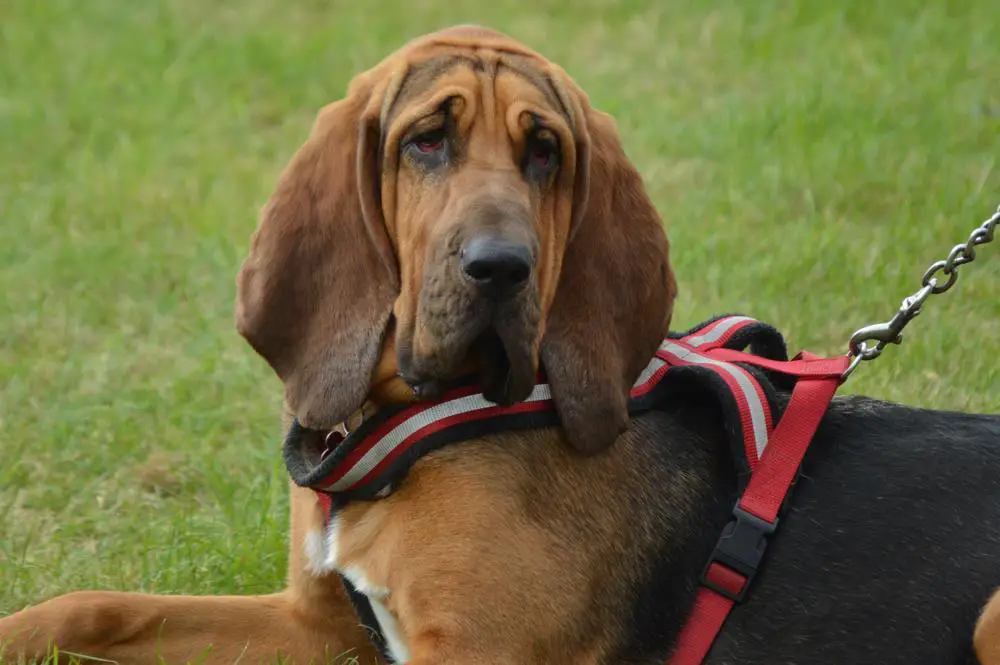
How Popular are Bloodhounds with New Dog Owners?
Every year, the American Kennel Club (AKC) publishes information on how popular a dog breed is in that particular year. The AKC gets the popularity information of a breed from how many dogs of that breed the owners register with the AKC every year. The AKC collects this data for about 200 dog breeds.
The graph below shows the popularity trend of the Bloodhound.
The popularity of the Bloodhound averaged over the years is Number 49 out of about 200 dog breeds.
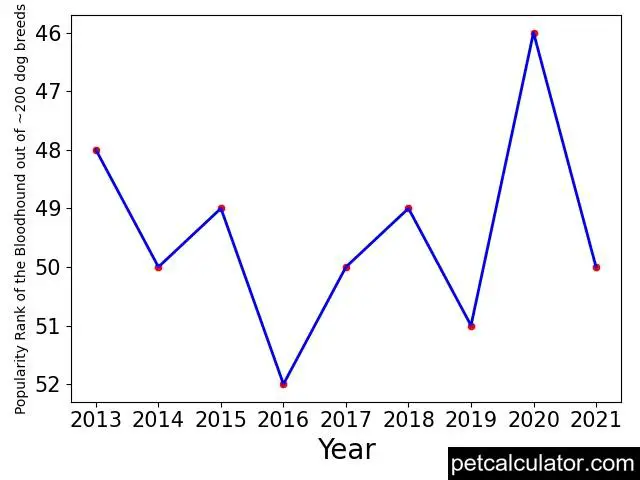
Do not get a dog breed just because it is a popular dog breed. And do not reject a dog breed just because it is an unpopular breed.
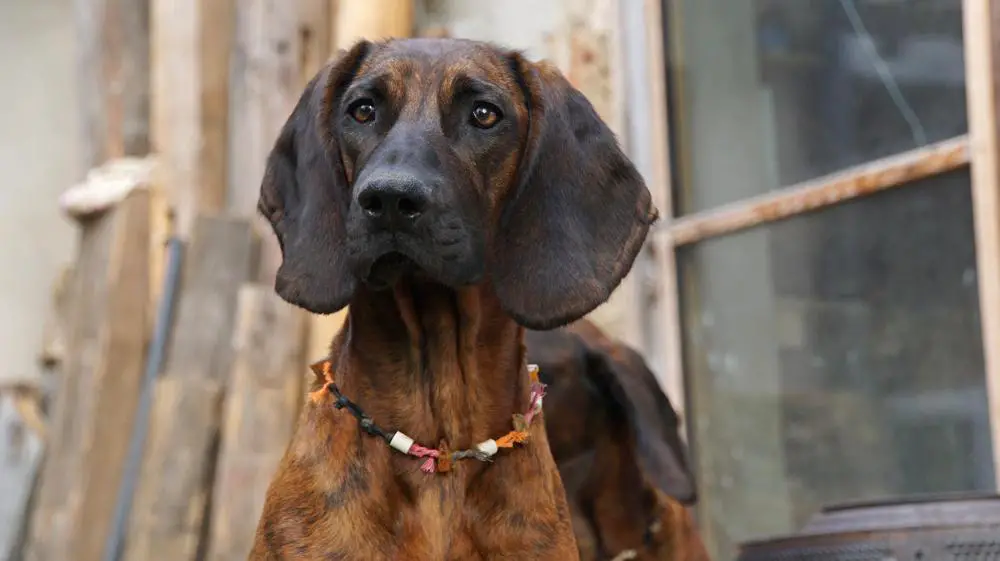
Health Problems in Bloodhounds and How to Prevent Them
Every dog breed has its own set of health problems that it tends to develop. There is nothing like a perfect dog breed.
The Bloodhound is prone to certain genetic health conditions. The Orthopedic Foundation for Animals (OFA) is an organization that keeps track of genetic health problems in dog breeds.
From the extensive records that the OFA keeps, the OFA knows what health problems each dog breed is naturally prone to develop.
Hence, the OFA recommends which health screening breeders should perform on a dog breed to make sure that the breeders won`t breed `defective` dog parents that can pass down defective genes to their puppy offspring.
If you want a Bloodhound puppy that will grow up to be healthy, make sure that your Bloodhound breeder screens your puppy or your puppy`s parents for the health problems that the OFA recommends for your puppy`s breed. This will increase the chances that your puppy is free from genetic defects.
The following are the health tests that Orthopedic Foundation for Animals (OFA) recommends that breeders should screen Bloodhounds for:
- Cardiac Evaluation
- Degenerative Myelopathy
- Elbow Dysplasia
- Eye Examination
- Hip Dysplasia
- Patellar Luxation
You can find out more about OFA`s recommended tests for Bloodhounds here.

How to Take Care of Bloodhound
To take good care of your Bloodhound, you need to make sure that you groom your Bloodhound regularly.
Secondly, you need to find a veterinarian in your area that will routinely check the health status of your Bloodhound regularly, and give you appropriate recommendations on your Bloodhound`s preventative care.
Thirdly, you need to commit some time to exercise your Bloodhound daily. Regular exercise helps improve the health and quality of life of your Bloodhound.
Also, you need to feed your Bloodhound high-quality dog food, and the food should be of the right amount to prevent your Bloodhound from getting overweight or underweight.
See our recommendations on what to feed the Bloodhound and how much food to feed the Bloodhound at different life stages.
Finally, you need to make sure that your Bloodhound has access to clean water all the time. See our recommendations on how much water your Bloodhound needs to drink at different ages.
Dog Breeds That Are Similar to Bloodhounds
If you have not made up your mind on which dog breed to get, you may also want to consider some other dogs similar to the Bloodhound.
We crunched the numbers and found that the following dog breeds that have similar behavior and temperament as the Bloodhound:
- Boykin Spaniel (71 percent match with Bloodhound). Learn more about the Boykin Spaniel here.
- Brittany (74 percent match with Bloodhound). Learn more about the Brittany here.
- Irish Setter (74 percent match with Bloodhound). Learn more about the Irish Setter here.
- Siberian Husky (75 percent match with Bloodhound). Learn more about the Siberian Husky here.
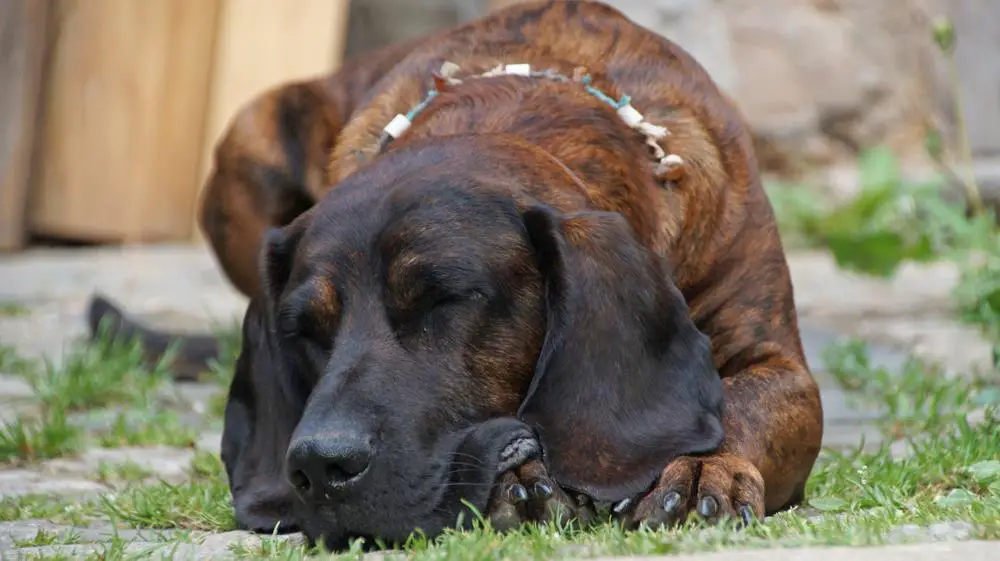
Other Things to Know About Bloodhounds
Here are some of the very important characteristics of the Bloodhound that you need to know about the Bloodhound breed:
